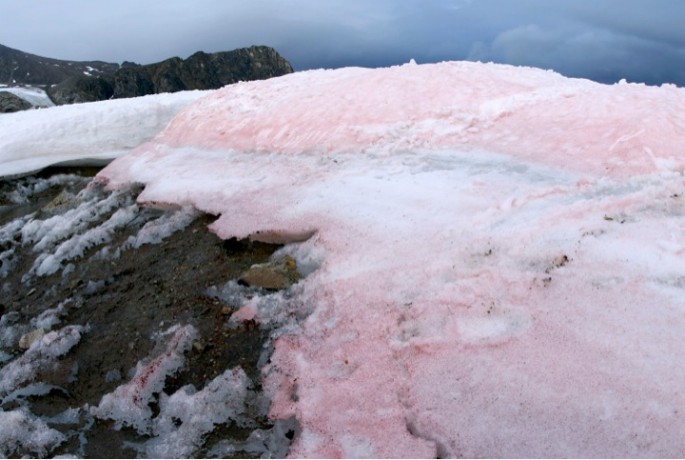A new study reveals some odd coloring on the world's biggest ice sheets, as fields of algae ranging from red to pink hues are forming on glaciers, indicating rapid global warming. Prior to these new findings, scientists thought this color originated from a toxic spill or even baby seals being slaughtered. In this new study, scientists now confirm that this extensive algae formation is causing glaciers to melt rapidly than ever before.
In this new study, this odd discoloration caused by algae is confirmed to speed up ice melt as the reddish algae that surrounds the snow continuously absorb more sunlight. As the algae warms up, the snow also rises in temperatures as this originally greenish algae absorbs sunlight which forms a reaction, that builds itself a sort of sunscreen that spreads a watermelon hue throughout the slopes.
This algae is not uncanny and can be seen throughout glaciers around the planet however, they have a significant effect on snow during the summer, which is now being measured in this new study. Researchers also revealed that this algae blanketing around this snow can cause the snow to melt 13 percent faster. Snowfields and glaciers are now retreating as they now expose darker rock and soil under this snow blanket.
The effect of this rapid melting is exposing these rocks as they absorb more solar energy and emitting more heat to the planet. Scientists believe that global warming is also caused by these red algae covering snow on glaciers and ice sheets, which should also be included in current climate models.
According to geobiologist Stefanie Lutz from the GFZ German Research Center for Geosciences, as they examined these organisms thriving in the summer snow, they are now suggesting that bacterial communities thrive differently in various regions on the planet, as this red algae that is causing red snow can be found around the world, where climate models should be updated with their effects on melting glaciers.
This new study is published in the journal Nature Communication.



























